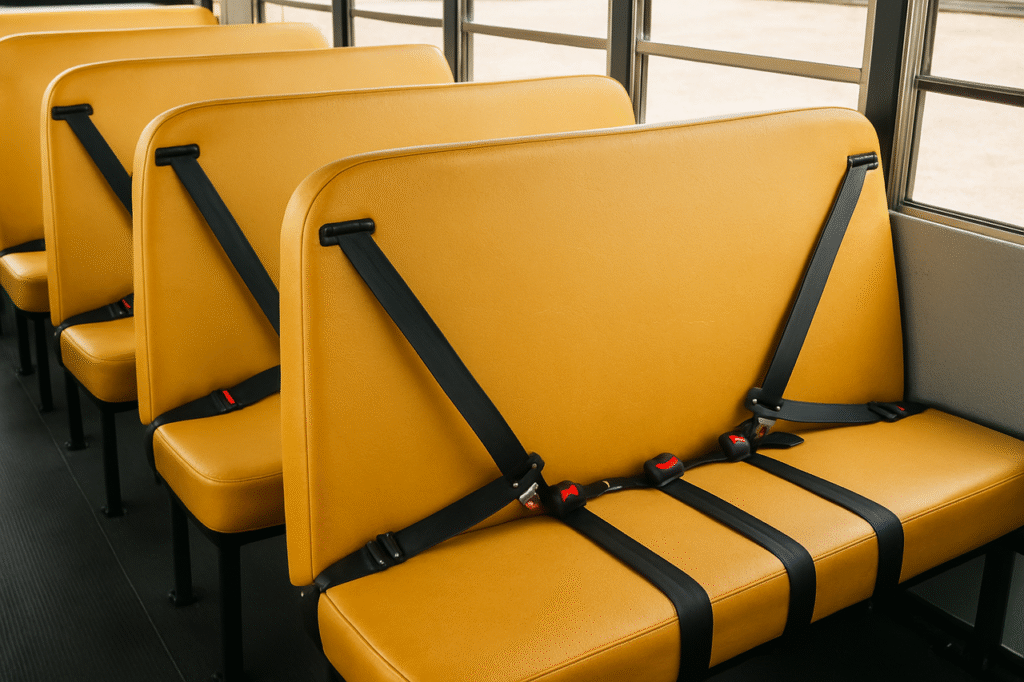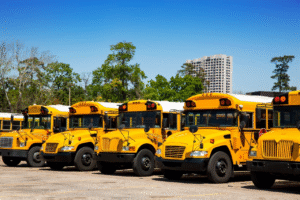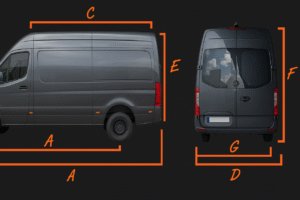When parents see a school bus driving by, they often wonder, Why don’t school buses have seatbelts? It’s a common question, especially when seatbelt laws apply to nearly every other vehicle on the road. At Brilliant Charters, a trusted student transportation service, we believe in transparency and education when it comes to student safety. Here’s why most school buses operate safely without traditional seatbelts and how they’re specifically designed to protect children.
Are School Buses Safe?
School buses are the safest form of ground transportation, involved in only 0.4% of fatal crashes between 2007 and 2016. Of the 281 school-age children killed in these crashes, most were not on the bus itself. Due to strict safety regulations, students are about 70 times more likely to arrive safely at school by bus than by car. Their design features high visibility, reinforced structure, and trained drivers, all contributing to safer travel. For parents and schools, buses remain the most reliable option for daily student transportation.
Additional Safety Features That Make School Buses Safer
The National Highway Traffic Safety Administration (NHTSA) has consistently backed the idea that school buses are structurally safer than cars due to a concept called compartmentalization. This means children are protected by strong, closely spaced seats with energy-absorbing backs, much like eggs in a carton. These features significantly reduce the risk of injury, even in the absence of seatbelts. School buses are designed to be highly visible on the road, thanks to their bright yellow color, flashing red lights, and retractable stop-sign arms. Cross-view mirrors also help drivers monitor the area around the bus, thereby preventing accidents.
Reasons Why School Buses Don’t Have Seatbelts
At first glance, it may seem surprising that most school buses lack seat belts. However, their overall design and safety features are specifically engineered to protect children without them. Understanding the reasons behind this can help ease concerns and highlight how school buses keep students safe.
1. Certified and Highly Trained Drivers
School bus drivers play a key role in ensuring student safety and are among the most thoroughly trained drivers on the road. They must meet strict federal and state requirements, including passing first aid tests, background checks, drug and alcohol screenings, and maintaining a clean driving record. Drivers also need a valid DOT Medical Certificate and must complete at least 10 hours of renewal training annually to maintain their certification.
2. Size and Weight Advantage
School buses are much heavier than passenger cars, weighing between 10,000 and 36,000 pounds, depending on occupancy. This added mass reduces the crash force experienced by passengers, making them less vulnerable in collisions compared to car occupants. Smaller school buses under 10,000 pounds are required to have seat belts since their crash dynamics are more similar to regular vehicles. Larger buses rely on compartmentalization for frontal impact protection, but research after 2012 fatal crashes showed that lap-shoulder seat belts offer better protection in side impacts and rollovers.
3. Lower Speeds for Safer Travel
School buses operate under strict state regulations that typically require them to drive below posted speed limits, especially in residential areas. This lower speed reduces the chances of accidents and lessens crash severity. However, in some areas, school buses may still travel up to 65 mph on highways, where high-speed crashes can be severe. While most large buses lack seat belts, their interior design compensates with other built-in safety features, which we’ll explore next.
4. Interior Layout and Compartmentalization
In 1977, FMVSS 222 established safety standards for school bus seating, leading to the use of a system called compartmentalization. This design features strong, padded, closely spaced seats that absorb impact and help keep children safely contained during a crash, essentially acting like built-in seat belts.
While effective in front-impact collisions, compartmentalization doesn’t offer the same protection in rollovers or side crashes. In such cases, only seat belts can prevent serious injury.
Our Commitment to Safe Student Travel
At Brilliant Charters, safety is not an option; it’s a promise. While seatbelts may seem like the obvious choice, decades of research and practical experience show that large school buses are built to keep your children safe through smart engineering and strict protocols. Whether we’re transporting students, hosting academic field trips, or partnering with schools across the region, Brilliant Charters ensures every journey is safe, smooth, and reliable.
Explore Smarter Student Travel with Brilliant Charters
Have questions about our safety practices or vehicle options? Our team at Brilliant Charters is here to help. Whether you’re a parent or school administrator, we’re happy to provide the details you need and create a transportation plan that works for your schedule and budget. Reach out today, we’re just a call or message away.
Brilliant Charters, Getting Students There Safely, Every Time.








